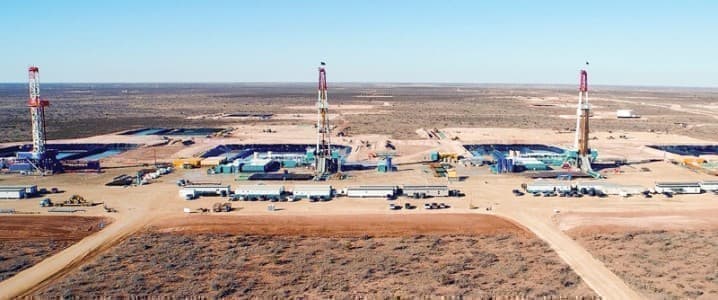U.S. shale production is set to fall to a two-year low in the coming weeks, with the Permian basin leading the way down.
In the latest Drilling Productivity Report, the EIA estimates that oil production from the country’s leading shale basins is set to fall by 197,000 barrels per day in June compared to a month earlier. The Permian is set to lose 87,000 bpd, but other losses come from the Eagle Ford (-36,000 bpd), Anadarko (-28,000 bpd), Niobrara (-24,000 bpd) and Bakken (-21,000 bpd).
U.S. natural gas production is also set to fall in June by about 1 percent, or 779 million cubic feet per day (mcf/d). Notably, the nation’s largest gas producing region in Appalachia loses a relatively modest 85 mcf/d. Instead, much deeper declines from associated gas production in the Permian (-210 mcf/d) and the Anadarko (-244 mcf/d).
The larger decline in Permian gas compared to the Marcellus is a reflection of the fact that natural gas prices were already in the dumps prior the pandemic, wallowing below $2/MMBtu. Marcellus drillers began cutting late last year. Natural gas prices didn’t change much after the pandemic (in fact, natural gas prices briefly rallied). Meanwhile, the much larger loss of gas production in the Permian has more to do with the sharp downturn in oil drilling. Texas gas followed oil on the way up, and it will follow oil on the way down.

The data from the EIA shows that the decade long U.S. shale boom has come to a screeching halt and is now heading in reverse. Oil production from the top shale basins will dip to 7.8 million barrels per day (mb/d), rewinding output back to late-2018 levels.
There is now a confounding disconnect between the health of the U.S. shale industry on the ground and the stock prices for a variety of energy companies. Part of that can simply be chalked up to the rally in oil prices from worthless levels (or less than worthless) to above $30 per barrel in the course of a few weeks. Related: Could This Become The World’s Newest Oil Exporter?
But the Federal Reserve is also pumping trillions of dollars into the stock market, while also more directly buying up corporate bonds of energy companies. The central bank is even buying up bonds from shale companies that recently declared bankruptcy.
Occidental Petroleum has spent millions on lobbying for help, even going as far as telling its workers to write letters to Congress. When the Federal Reserve changed its standards in April to allow larger companies to take advantage of its Main Street Lending program, the switch allowed Occidental to qualify.
The oil industry has taken advantage of government largesse in other ways. Diamond Offshore recently tapped into a little-known government stimulus program, bringing in $9.7 million. The company then rewarded executives by the same amount, according to a report from Bloomberg.
Environmental regulations are also rolling back. Drilled News has a running tally of all the different ways the oil industry has lobbied for deregulation, new lease sales, tax credits and other government benefits during the COVID-19 pandemic. The list is rather long.
At the same time, even as executives get paid and stock prices hold up better than expected, more companies are going bankrupt and job cuts have already been severe. WTI may be up dramatically from the teens, single digits and even negative prices seen in April, but $30 is still a level at which few oil companies can turn a profit.
“The fundamental backdrop has begun to recover,” Morgan Stanley wrote in a note. But as “a marginal producer globally, some of the US E&P industry may struggle to generate long-term competitive returns to justify current valuations.”
ADVERTISEMENT
U.S. oil production could fall by as much as 2 mb/d by the end of June, according to an estimate from Rystad Energy. “Actual production cuts are probably larger and occur not only as a result of shut-ins, but also due to a natural decline from existing wells when new wells and drilling decline,” Rystad said.
By Nick Cunningham of Oilprice.com
More Top Reads From Oilprice.com:
- Should U.S. Shale Be Worried About A Chinese Takeover?
- Oil Spikes Despite Pandemic Uncertainty
- How Accurate Are EIA And API Inventory Reports?



















Gee, I wonder why the significant decline over the past two months?
You then go on to make the amazing claim that, the data from the EIA shows that the decade long U.S. shale boom has come to a screeching halt and is now heading in reverse.
All based on a relatively modest reduction directly related to the global shutdown.